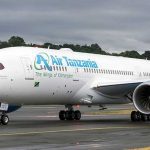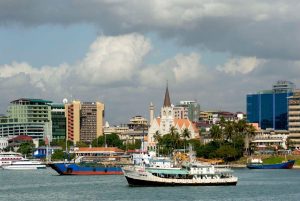After a challenging 18 months post the Covid pandemic, it looks like the African aviation industry may be looking at spreading its wings again and is set to revive itself and remerge stronger through mutual cooperation.
Taking a leaf out of the African Continental Free Trade Area (AfCFTA) and SAATM or the Single African Air Transport Market in place, both of which are aimed at the liberalization of air transport in Africa and economic growth, Africa’s air carriers are now looking at forging mutually beneficial ties to boost intra-Africa air connectivity.
Intra-African air connectivity has remained a challenge for the region and developing a pan African network is becoming more imperative by the day, in a bid to connect more areas of the continent and to boost trade and economic activity and lift people out of poverty. This and more such topics were under discussion on Wednesday (October 13) at the popular CAPA Live series hosted by a leading resource for global aviation news and research – CAPA Centre for Aviation.
While speaking about mutual cooperation, recovery paths for the sector post the pandemic and how partnerships will yield increasing benefits to the region in the future- Allan Kilavuka who is the Group MD and CEO of Kenya Airways told Richard Maslen, director of Maslen Aviation Consultancy, “South African Airways is a very strong brand and so are we. And we believe that by being apart we tend to fragment the market a lot more, but by being together and by cooperating, we consolidate the market. There is the benefit of the customers to begin with and the benefit of two airlines and the economy in Africa as well. So we have signed the Memorandum of Cooperation with South African Airways to see what we can do quickly. But the long-term objective of this partnership is to form a pan-African airline that should be able to compete with other large carriers as well.”
Kilavuka added in the conversation that this was perhaps the beginning of the many such partnerships for co-creating a strong pan African airline network. Incidentally, this development is also key for South African Airways, which has recently resumed flights after it had announced bankruptcy in December 2019 after slashing hundreds of jobs and reports of widespread corruption amounting to at least $30 million having been misappropriated, leading to grounding its operations in March last year.
He further added, “So the cooperation that we have or this partnership that we have started up with South African Airways is the first of many. We had an earlier partnership with Congo Airways, which is in Central Africa; very similar, but with a slightly different objective. And the partnership with Congo Airways is to mutually support each other because Congo Airways has a lot of domestic markets and they don’t necessarily have the equipment. So we are trying to help them in that regard and support them in terms of giving them equipment and to support them in fulfilling their local demands. And then mutually cooperate so that we can connect the Central to the East, and also Central to the West and then Central to the South. So that is with Congo Airways. With South African Airways, we want to see how we can cover the African continent very effectively.”
Kilavuka’s statements become important in light of the fact both the African Continental Free Trade Area (AfCFTA) and SAATM or the Single African Air Transport Market have already been put in place to garner the liberalization of air transport in Africa and economic growth for the continent.
Under the AfCFTA, trade facilitation measures are slated to cut red tape, reduce tariffs and simplify customs procedures which are then expected to drive around $450 billion in income gains by 2035 and connect 1.3 billion people across 55 countries and power deep economic reforms and growth for African nations.
Meanwhile, the SAATM launched in January 2018, is the first flagship project of the African Union aimed at creating a single unified air transport market for air transport in Africa. It is slated to be a step in the direction of full liberalization of intra-African air transport services in terms of market access, free exercise of the first, second, third, fourth and fifth freedom traffic rights for passengers and freight air services by eligible airlines.
Source: Logistic Update Africa






